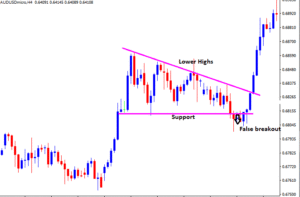

When the initial selling occurs, other market participants react to the falling price and jump on the bandwagon to participate. This pattern may form when large investors spread out their selling over a period of time. The Broadening Wedge Descending pattern forms when the price of a security makes lower lows (1, 3, 5) and lower highs (2, 4), forming a downtrend. The wedge shape is created by connecting the lower highs and the lower lows with two trend lines that converge to create a wedge shape. Ascending: The ascending triangle is a bullish pattern.

Symmetrical: The symmetrical triangle points sideways, which tells you it’s a horizontal pattern that becomes a setup for a move upward or downward once more price movement provides a bullish or bearish indicator. To limit potential loss when the price suddenly goes in the wrong direction, consider placing a stop order to sell at or below the breakout price.Ĭlick here to view the current news with the use of Patterns There are three types of triangles: symmetrical, ascending, and descending. The upward Breakout level is the highest high. An ascending wedge is often a bearish reversal signal, while a descending wedge is a. A saucer, or U-shaped, price pattern usually takes a while to form, but it creates a clear reversal signal by forming a large base that acts as a level of support. Pattern height is the difference between the highest high and the lowest low. Stock traders look for a different type of recovery pattern when looking for shares to buy. To identify an exit, compute the target price for by adding the height of the pattern to the upward Breakout level. Consider buying a security or a call option at the upward breakout price level. Once the price breaks out from the top pattern boundary, day traders and swing traders should trade with an UP trend.


 0 kommentar(er)
0 kommentar(er)
